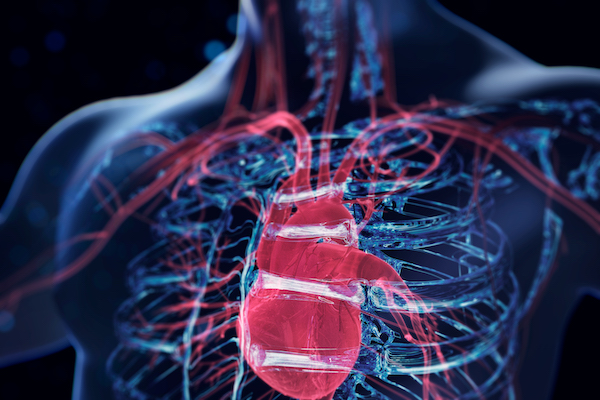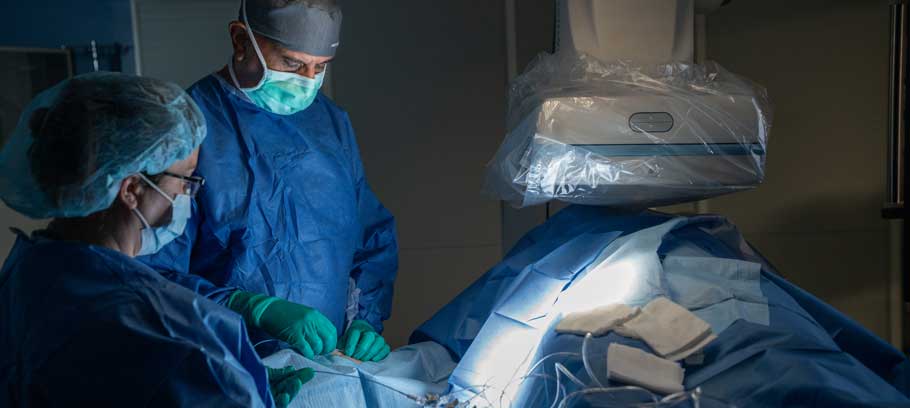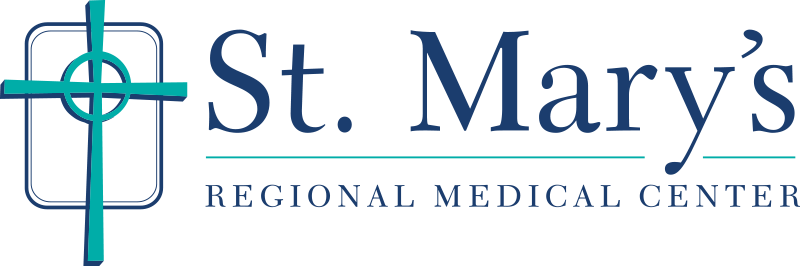Quality Heart Care for the Enid Area
In 2017, Oklahoma had the second highest cardiovascular disease death rate in the nation. The leading cause of death in Oklahoma is cardiovascular disease. Preventing cardiovascular events before they occur is important. Stopping smoking, keeping blood pressure under control, losing weight if you're overweight and increasing the amount of fresh fruits and vegetables you eat can help reduce heart attack risk.
If you do have heart disease, St. Mary's Regional Medical Center has specially trained physicians and nursing staff to treat a broad range of emergency and non-emergency heart conditions.
 Your Cardiac HUB in Northwest Oklahoma
Your Cardiac HUB in Northwest Oklahoma
Learn more about our cardiovascular services in the latest edition of Health News Online.
Recognition for St. Mary's Catheterization Lab
St. Mary's Regional Medical Center is consistently a top performer in providing patients who suffered a heart attack outstanding door-to-balloon (D2B) time. D2B time refers to the interval from the time a patient arrives at the hospital's catheterization (cath) lab to the inflation of a balloon catheter within his or her blocked artery to restore blood flow (percutaneous coronary intervention or PCI). The shorter the D2B time, the greater the chance of survival. Only four hospitals in the state of Oklahoma were "Heart Attack Top Performers” that year. St. Mary’s Regional Medical Center was also the only hospital outside of the Oklahoma City metro area to receive the recognition.

Diagnosis and Treatment Together
The St. Mary's Regional Medical Center cardiac catheterization lab team consists of board-certified cardiologists, radiology technologists and registered nurses. Staff members continually update their skills through continuing medical education and certification programs.
The Cardiac Catheterization/Interventional Radiology suite at St. Mary's features advanced technology, including the Alphenix angiography system from Canon Medical Systems USA. This system has stent enhancement capabilities that provide clinicians with exceptionally sharp images. These images help guide the physician and staff during complex procedures. With crisp, clear images, clinicians may be able to use less intravenous contrast, making it safer for the patient. The system’s advanced dose optimization technologies can also help improve patient safety.
Diagnostic Testing and Treatment
Our cardiac care teams offer advanced diagnostic testing, noninvasive and invasive treatments, cardiac rehabilitation and preventive education about congestive heart failure, pulmonary hypertension and peripheral vascular studies.
Our noninvasive services can help your physicians evaluate your symptoms and recommend additional testing if needed. These services include:
- Echocardiography – test that records the electrical activity of the heart to check for potential problems
- Stress tests – an exercise stress test is used to evaluate how exercise affects your heart
- Holter monitors – a wearable device that continuously records the heart's rhythms
Our invasive services include:
- Diagnostic catheterization – In this two-step procedure, the physician first inserts a thin tube into a large blood vessel that leads to the heart. The second step is coronary angiography, in which a contrast dye that is visible in X-rays is injected through the catheter. Blockages or problems can be seen on a video screen and treatment may then take place to remove the blockage. This involves inflating a balloon catheter to open the artery and restore blood flow (PCI).
- Right and left heart catheterization – This procedure involves threading a thin tube through a blood vessel to the heart.
- Stents – Stents are used to restore blood flow when arteries have been blocked by plaque.
- Coronary pacemakers – A device that uses electrical pulses to prompt the heart to beat at a regular rhythm.
- Coronary Computed Tomography Angiogram – a heart imaging test that helps determine if plaque buildup has narrowed the coronary arteries.
- Tilt Test – a test done to evaluate symptoms of fainting (syncope). Blood pressure and ECG are measured during the test to evaluate changes during the position changes.
- Loop Recorder – small implantable heart monitoring device that records your heart rhythm continuously for up to three years.
- Cardioversion – a procedure used to return an abnormal heartbeat to a normal rhythm. This procedure is used when the heart is beating very fast or irregular.
- Intra-aortic balloon pump – a long, skinny balloon that controls the flow of blood through your largest blood vessel, the aorta.
Life Vest Services
Learn more about our two different versions of wearable cardiac defibrillators.
Know Your Numbers
St. Mary’s Regional Medical Center is dedicated to helping you reduce your risks for heart disease. We encourage you to track your numbers to help monitor your blood pressure, cholesterol, blood glucose and body mass index (BMI). Keeping these numbers in check can help lower your chances of developing heart disease.
Download this Guide to Help Know Your Numbers
For more information on these critical numbers, as well as more heart health information, visit the American Heart Association website.
Heart Attack Symptoms for Men and Women
If you experience any of these signs, call 9-1-1 immediately.
According to the American Heart Association® (AHA), men and women often experience different heart attack symptoms, and they may also have different heart attack triggers. Most often, men experience physical exhaustion before a heart attack. Meanwhile, women most often report having emotional stress prior to a heart attack.
Heart Attack Symptoms for Men
Men often (but not always) experience what are known as "classic" signs of a heart attack:
- Discomfort in the center of the chest that may feel like pressure, squeezing or fullness that goes away and comes back
- Chest discomfort accompanied by fainting, lightheadedness, shortness of breath or nausea
- Pain that spreads to the neck, shoulders or arms
Heart Attack Symptoms for Women
- Pressure, squeezing or pain in the center of your chest that lasts more than a few minutes or goes away and then returns
- Shortness of breath with or without chest pain or pressure
- Breaking out in a cold sweat, experiencing nausea or feeling lightheaded
- Pain or discomfort in the arms, back, neck, stomach or jaw
- While chest pain and discomfort are common symptoms of heart attack for both women and men, women may be more likely than men to have some of the other symptoms mentioned above, including nausea and vomiting, back or jaw pain and shortness of breath
Hear from Dr. Lior Shamai, DO
